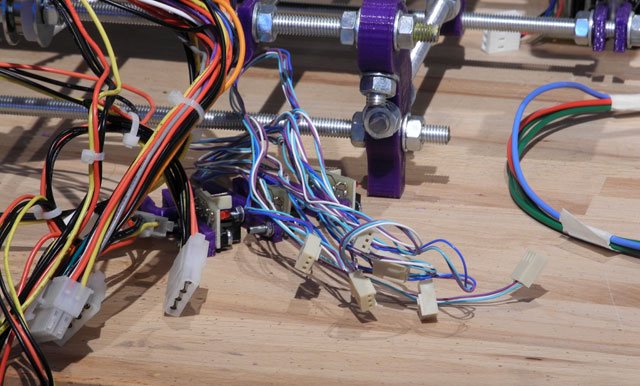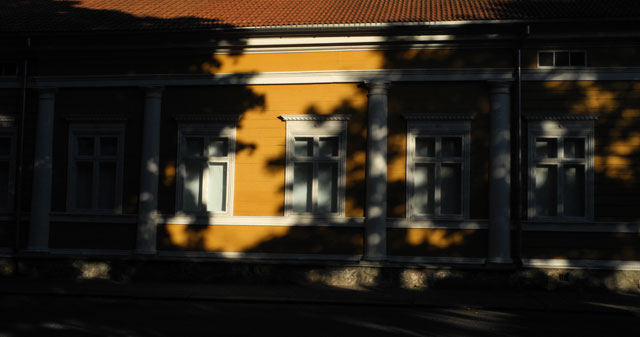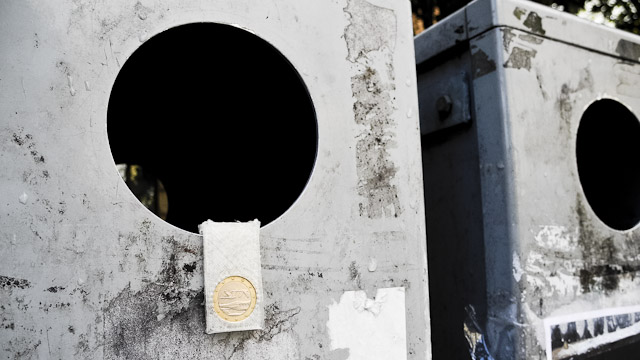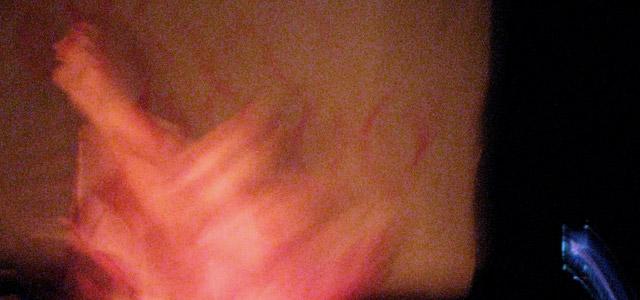For the past three weeks I’ve been in Turku, in the studio of Gallery Titanik, whacking away at the RepRap Mendel Prusa 3D printer. I’ve been kept so busy toiling with this that I’ve lost sight of the grander scheme of things, like why I’ve been building the printer in the first place. I’ve been putting off communicating what I’m doing not because I don’t think it’s worthwhile, but rather because the more immediate problems of finding screws or getting the electronics to work seemed so much more pressing; and besides, it ought to be obvious what I’m doing, no?
Then again, every once in a while it’s good to remind oneself that one of the few telling differences between an artist and a crazy person is that an artist at least nominally does her stuff for an audience, while the crazy keeps to herself or only occasionally performs for medical personnel.

If the Work of art in the age of reproduction spoke about the disappearance of aura, of authenticity and a direct interaction between any one artist and her audience, the means of reproduction through RepRaps and similar DIY machines reintroduce at least the authenticity of the machine — or its configuration, parts and calibration — into the object.
There are things about fabbing which sets it apart from traditional reproduction, as for example there is no original on which any copy is modeled but only a digital model created to exist in a different medium from that of any physical copy. Any artworks which are printed from a CAD file are originally only ever mathematical descriptions in a 3D-file format on computer storage. So although the printed object isn’t unrelated to the artwork, it certainly has a random element to it, a stutter in its materiality.
Historically art was about creating objects which based on esthetics and social function were considered “artistic,” then around the time of Fountain it became explicitly about an artistic aura, and then fluxus removed even the “work” part of “art work” which after post-modernism left us with the free-for-all shit buffet we’re at today. Perhaps fabbing could at least offer a lifesaver?
With fabbing, we have the possibility of having art which is highly conceptual, but which manifests itself physically not by the mediation of the initial artist, but rather through printers — machines and their operators — which exist in a DIY sphere and so are all different, temperamental, uneven; In another word, they are unique. But just as we don’t give artistic merit to the assembly-line worker who manufactures the printer with which we print our photographs, we are unlikely to attribute artistic merit to whomever assembled the printer which prints our CAD-models.

Rather, an actualized 3D-print might be the artwork of an artist, but it’ll have the aura of the machine, or rather the aura of the DIY home fabrication process of building and tuning the machines; If movements can impart aura, it’s an aura of industry dependent on craft, an inversion of industrialization, transforming engineers into cottage industry artisans churning out other peoples art objects.
nathan7: and I want a good print
nathan7: a really good print
nathan7: without overhangs ruining things
nathan7: it’s about the end result here
From a discussion on IRC #RepRap
The idea of personal fabrication is positioned to affect the manifestation and appreciation of art as soon as some critical mass and manufacturing capacity is reached: The result will be analogue objects bearing the likeness of art; not simulacrum or simulation, but a second order relation to the artwork, twinned with the aura of machine. Perhaps fabbing can be a disruptive enough technology to change the artists role into something new, something interesting, something other than making artworks.



